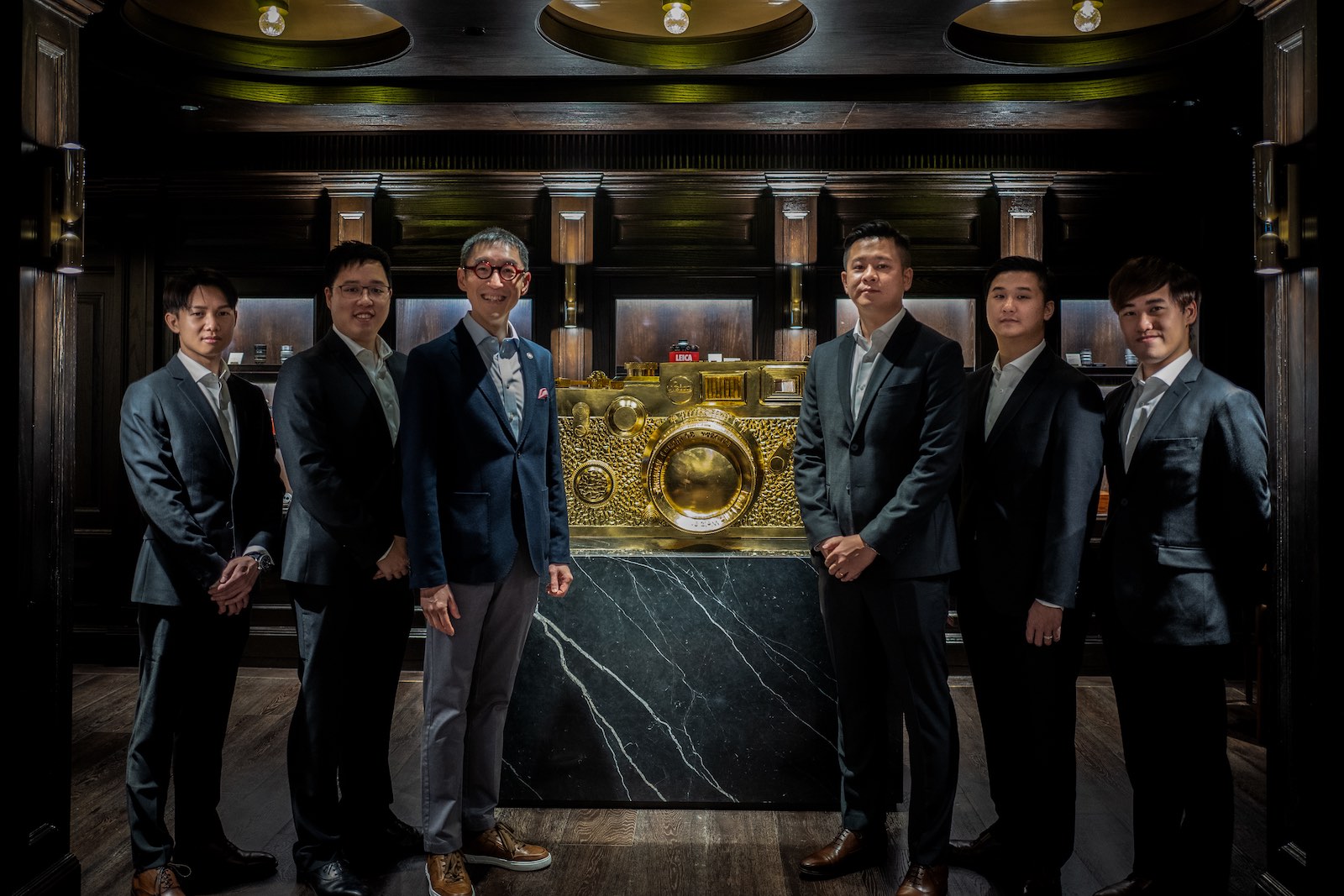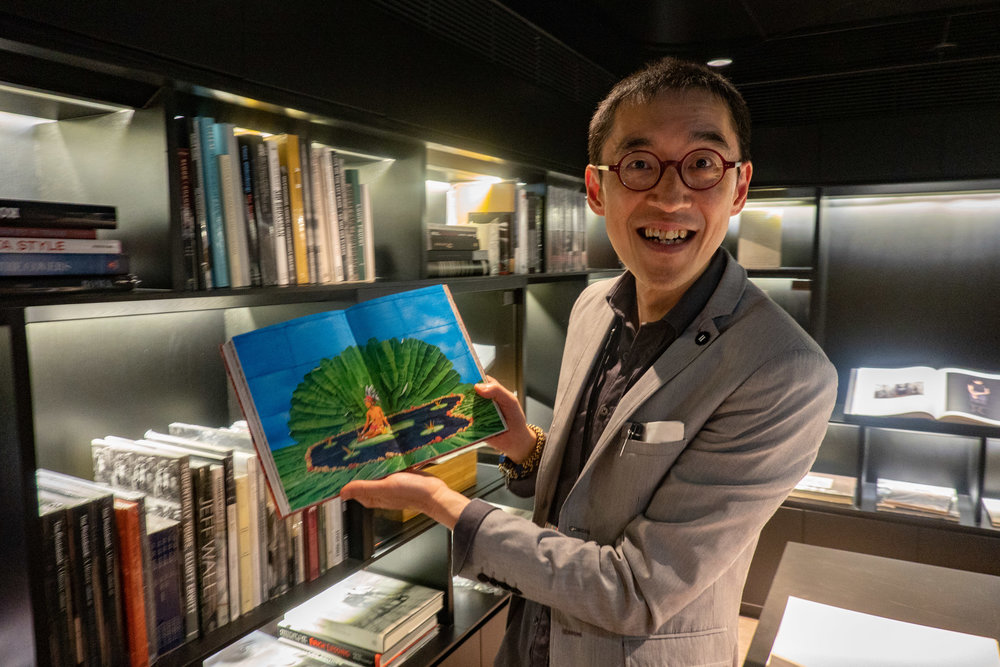He is one of the foremost collectors of Leica cameras in the world. Douglas So is also one of the nicest and warmest characters I have met in the world of Leica. He presides over two must-visit venues in Hong Kong – the f11 Museum in Happy Valley and the f22 foto space in Kowloon where you can overdose on Leica history and the work of Leica photographs through the decades.
I was therefore delighted to read this week’s interview with Douglas on the Leica Camera Blog, a fitting celebration of his journey to becoming such a foremost figure in the world of Leica. But for a man who has everything, what could possibly be is favourite collector’s item?
“There are too many! But among them all, I like the M cameras, especially the MP cameras made in 1956 and 1957. They were made especially for professionals, and were not considered commercially successful. At the time only 402 cameras were made; but in the end they became collectibles because of the very special features that do not exist in other Leica M cameras. So, right now, in auctions, the MP cameras are often the most sought-after items. They also hold a high value, because many of them were used by very famous photo journalists.”
But being owning so many cameras brings responsibility. Such as exercising them.
“I think you have to exercise them. When you let them sit idle for ten or fifteen years, I think there will be problems, even though they are mechanical cameras. So it’s good to use them from time to time for half a day, to let them run and fire them at different speeds, so they will remain in a healthy state.“
This is advice I took to heart years ago. Every few months I heed a recurring to-do to take my modest and fairly nondescript collection off the shelf and I run through the speeds, firing the shutters as Douglas explains above.
Most Leica collectors tend to be a friendly lot, even those of the standing of Douglas So. But Douglas remains so approachable and is possessed of such an infectious enthusiasm for photography that it’s hard not to be impressed. If you haven’t splurged on a Leica I or an early double-stroke M3 (perhaps a black MP, sir?), you’d be well advised to stay away from Mr So. Otherwise you will be setting foot on that very slippery slope to Leica perdition. Many of you already know the feeling.
You can find the f11 Museum at 11 Yuk Sau Street, Happy Valley. The f22 foto space gallery is in the Peninsular Arcade (units W16 and W18), Salisbury Road in Tsim Sha Tsui.



Very cool indeed! The world needs people like this, whether cameras, cars, or watches, who have a passion for the history and the knowledge of the brand to share with the rest of us.
“..The world needs people like this..” ..Er, no, Chef.
What the world needs is scientists working at delivering inoculations against the present ravaging virus, and visionary, humanitarian politicians. I really doubt that “..the world needs..” dilettante, inarticulate, trinket collectors.
I’d rather have a Jonas Salk – who developed the polio vaccine – or a Barack Obama – who created accessible healthcare for poor Americans – or Franklin, Watson and Crick – who recognised the structure of DNA – or an Albert Einstein – who described the quantum photo-electric effect, explained what gravity is, and explained the relationship between energy and what we call matter – than some popinjay ‘talk-up-the-value’ camera, watch or car collector.
I can’t think what the latter provides for humanity.
What we need at the moment is something to give us a bit of a rest from the gloomy Coronavirus stories. Almost every headline these days starts with the C word.
I am sure all those scientists and clever people will be working flat out on discovering a solution – and all power to their elbows – but this doesn’t mean that everything else has to stop.
Good luck to Douglas So who is anything but a popinjay, as you put it. All he did was give an interview to the Leica Camera Blog. I for one find it refreshing!
I’d better mug up on virology or something so I have a reason to continue living.
I have camera lenses made by the guy (Grubb) who made the coelostat machine which was used to prove Einstein’s Theory of Relativity. In the Royal Dublin Dublin Society, where I am a member, we have glass colour photographic plates made in the 1890s by John Joly, who also investigated and developed the use of radium to cure cancer. We even have receipts for payments by Joly to Madame Curie. Leica and Zeiss optics are used in medical labs around the world. Popinjay collector that I am I will leave it at that, but I could give many other examples.
William
It takes all sorts, William, and the world is a better place for it. Carry on collecting, you might as well because I presume you are not working on a Covid-19 vaccine at the moment. You can start that next week.
It doesn’t have to be either or: there’s room for some lightness alongside the gloom.
I’d say that besides exercising manual, mechanical cameras, do exercise the batteries of electronic cameras: if left too long, discharged, they may become useless.
Charge and USE electronic cameras; but if you’re not going to use them (..or it..) for a while – like six months – charge the battery halfway, and then remove it, so that it doesn’t get drained, over the winter say, without your realising it ..by its keeping the camera’s electronic clock going, or maintaining the camera’s separate built-in clock battery.
Ditto light-meter batteries (for meters used with mechanical cameras) and the button cells inside older cameras ..cells which may corrode if left inside unused mechanical cameras.
Good advice, David
That’s really given me some catching-up to do! And doubtless some throwing out followed by expensive re-purchase !! All the same, thank you!
Very nice collection. The two 0 Series items No 128 and 129 must have been ‘upgraded’ a long time ago. No one in their right mind would do this today as original 0 Series cameras have been going for over 2 million each (pick your currency). Behind no 147, a genuine I Model A, is one of the rarer items that I have in my collection. It is the first version of the FISON hood for the Leica Elmar style 50mm lenses with a square front opening which has to be readjusted every time the lens is focused. Leica did not always get it right the first time.
William